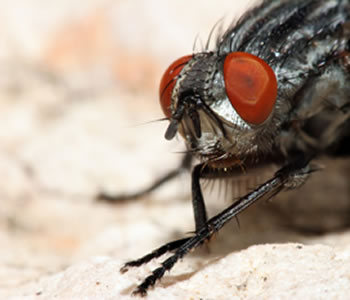 |
| House fly, Musca domestica |
Photo © iStockphoto/Arlindo Silva |
House Fly
-
Scientific Name:
- Musca domestica
-
Family:
- Muscidae
-
Order:
- Diptera (ants, bees, wasps)
-
U.S. Distribution:
- All states
This page has three tables, (1) Identification, (2) Look-alike Pests, and (3) Biology and Habits.
Identification
| Match the Shape and Size | Match the Color |
|---|---|
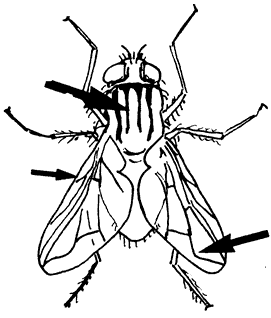 |
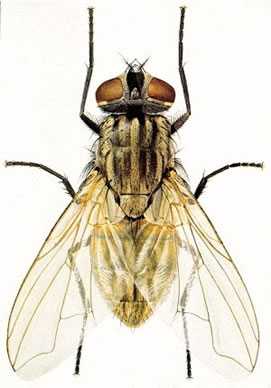 |
|
|
| Illustration by J. MacGown, Mississippi State University | Illustration by Agriculture and Agri-food Canada |
Look-a-like Pests
| Look-alike Pest | Differences |
|---|---|
Flesh flies (Sarcophagidae) |
Only 3 dark stripes on thorax; tip of abdomen usually pink; sides of abdomen not pale |
Cluster fly (Pollenia rudis) |
No black stripes on top of thorax; has golden hairs on thorax |
Biology and Habits
| Match the Food and Site | Match the Habits and Damage |
|---|---|
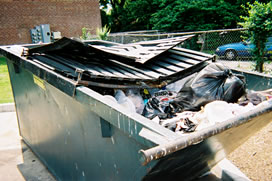 |
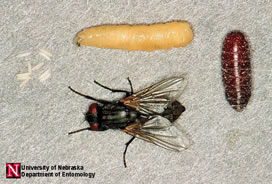 |
|
|
| Photo © Pinto & Associates | Photo by Jim Kalisch, Department of Entomology, |